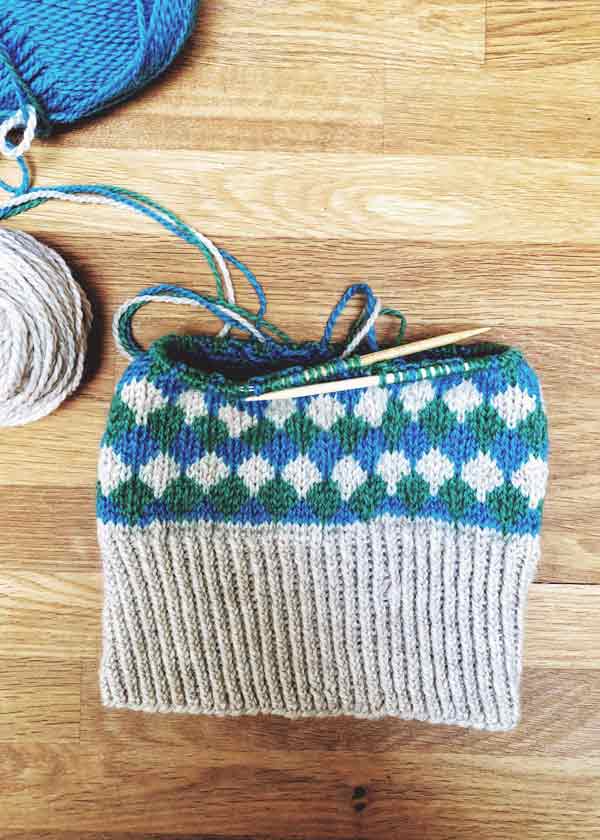One of the first knitting projects I finished this year is the Diamond Hat, a pattern you can download for free on the Ravelry website. This was a good project to practice my colorwork technique and tension (both still a work in progress).
Surprisingly, I was able to finish it super quickly, which makes it a great gift idea. One thing I noticed was that my ribbing was slanting to the left a bit. Do you see it? The ribbing is not a typical knit one, purl one. Instead, you knit the ‘knits’ through the back loops, which makes the rib be more defined. I liked the resulting rib, but the slanting edge was bugging me.

That’s why I decided to block the hat. Blocking sounds scary to new knitters, but actually, it’s a pretty easy process. You need a bucket, warm water, wool soap (or baby shampoo), and a few clean towels.
- Fill a bucket with warm water (you could also use your tub or clean sink) and add a drop of wool soap or baby shampoo to the water. (I used baby shampoo).
- Put the hat in the bucket and let it soak up the water so it sinks to the bottom.
- Gently, swirl the hat around in the water. Just be careful not to squeeze the fabric, because that could felt the wool.
- Rinse the soap out of the hat by pouring out the soapy water and filling the bucket with fresh water a couple of times. Swirl the hat in the fresh water to remove the soap.
- Take the hat out of the bucket and place it between two dry towels. Roll the hat and towels up together to remove the excess water. You can step over the roll to help get the most water out.
- Finally, lay the hat flat on a dry towel and let it dry. You can give the hat an occasional twirl to avoid a sharp crease. Some people dry hats on a small balloon for this reason.
This pattern is easy to follow, and you can have a lot of fun experimenting with different color combinations, something I’ve been thinking about lately.

If you are just getting started with colorwork, this is a great pattern to practice your skills. As a bonus, the floats are not too long, so if you don’t know how to catch floats yet, you can probably skip that, and your hat will turn out great.
I think I’d like to make another one of these hats and have some ideas for a few modifications, including extending the ribbing so that it covers my ears all the way when folded, and experimenting with an Italian cast-on, which I think looks super pro.



